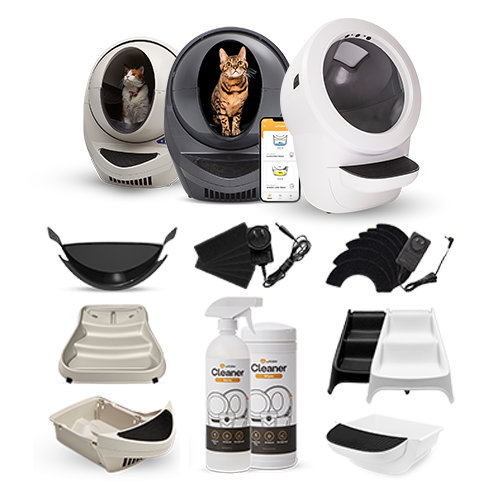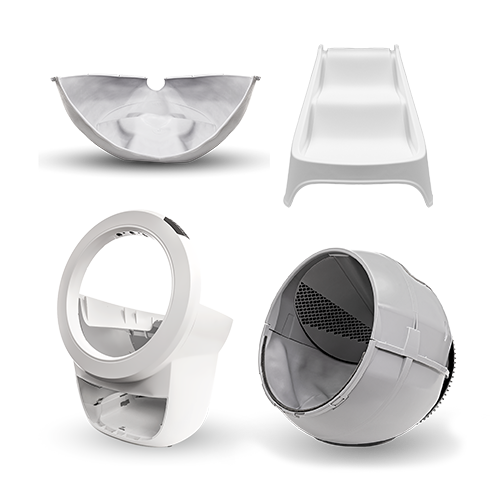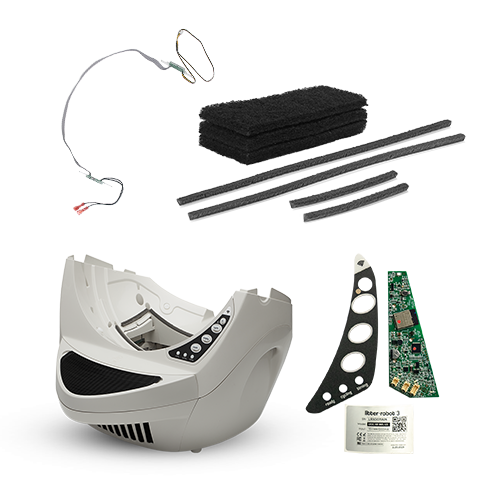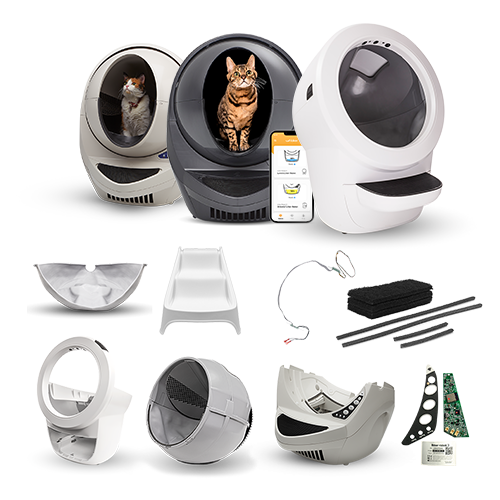Rolled up, spread out, or with fuzzy tails all across their face, no one can deny the fact that cats are adept sleepers. If "animal napping" were an Olympic game, there's no doubt that a cat would rise triumphant and return home with a gold medal. Cats manifest plenty of odd behaviours, for instance, sneaking into small spots around the house and hanging out all by themselves in cardboard boxes, all of which are driven by their innate instincts, i.e. the requisite need for comfort and safety. Sleeping is an intrinsic activity, but it also happens to be into this category because of your kitty’s willingness to take a cat-nap at odd hours. Whether it's during the day or in the middle of the night, these fluff balls are always amenable to take a cat-nap. Kitties are quite utterly skilful sleepers. Allocating more than half the day to sleeping, our feline friends can figure themselves amongst the classes of the most slumberous pets. Kittens and older cats sleep more than young-adults. They can clock up anywhere from fifteen to twenty hours a day depending on the age of the kitty. The only question that
arises here is:
Why do cats sleep so much?
Felines sleep for 15 hours a day on average, and some can doze off for as much as 20 hours in a 24-hour period- an attribute they inherited from their primitive ancestors. Veterinarians explain, in the wild, felines have to hunt to eat. The effort of stalking and chasing the prey consumes a lot of energy. Therefore, they conserve energy in-between their meals. While indoor felines are mostly tamed, they may still have a hint of that wild streak in them and may show natural impulses to hunt during the twilight hours. Cat-napping at odd hours is derived from these remnant traits of the evolution, nutritional habits, and the cat's basic biology.
NOCTURNAL OR CREPUSCULAR?
A pet expert, Tracie Hotchner writes following in her "
The Cat Bible":“
Even though cats have been domesticated for generations and their food comes out of a can, their internal clocks are still set for nocturnal activity,” Yet cats are
not
nocturnal. Many animal experts say that the cats are truly crepuscular rather than nocturnal, i.e. they are the most active around dusk and dawn. Nocturnal is a term used for an animal which sleeps all day and gets active only at night time while crepuscular is a zoological term used for animals or insects that are active in twilight (dusk and dawn). During these two times of the day, small prey animals have difficulty locating predators as their vision is less effective. It's consequentially not chance that hunting activity of the predators is timed for early in the morning and just after the dark. Your kitty's idea of "dawn and dusk" may be pretty offbeat and quite different from yours. It will wake you up at odd hours (say, three in the morning) to get another container of food opened, even when there's already some ready-to-eat in its food bowl. Once filled and satisfied, your cat may go back to sleep or just peacefully lounge around. Cats are active for little time early in the day before taking their very long-drawn mid-day nap.
Crepuscular behaviour is more associated with indoor house cats than stray or feral cats. It is so considering pet cats have learned a trade-off between playing all around the house during the day hours and peaceful silence at the bedtime as they are more prone to set their napping routine to fit their human’s schedule. This is the reason your kitten asks (almost begs) for food around dawn and dusk. Indoor pet cats may also display nocturnal ways at times because it is instinctual from their primitive ancestors. Roving around the house prowling the shadows all night to follow their prey; it's no surprise that your kitty rests 15 hours during the day on average! If you have allowed your cat to roam outdoors, it is possibly most active through the night. It may be a nocturnal hunter with excellent low-light vision just like its ancestors. Your little kitty may adhere to a schedule of hunting, devouring and napping just like her big kitty counterparts. All in all, most felines show outbreaks of enthusiasm, sometimes when you want to get some sleep or just don't want to get up, and then relax while you are working hard all-day or maybe want to spend time with them.
ARE CATS DEEP SLEEPERS?
If you believe your cat is always sound asleep, you may want to consider thinking again. There's a reason, after all, as to why have they termed it "cat-nap." While cats sleep about twice as much as their humans and prefer getting their rest through naps of shorter and longer durations rather than one big piece of sleep at night, they undergo similar sleep stages like us. Cats usually fall asleep instantly, seemingly after an outburst of intense energy. They slide into slow-wave sleep at first and then move to rapid eye movement (REM) stage of their sleep cycle. But the time spent in each step, as well as a full nap period, is much shorter. According to research, only about twenty-five (25) percent of a cat's sleep is deep sleep, while the other seventy-five (75) percent of the time it is lightly dozing off. Felines spend about 6 minutes in REM sleep. Comparatively, humans spend between 90 to 120 minutes in REM sleep per sleep cycle.
About three-quarters of the time, your kitty spends napping is what we might call
snoozing.
To tell if your cat is only snoozing, see if its eyes are open just a little bit, and also watch if its ears twitch and rotate toward noises. In this state, felines can get all the rest they need, but they're still aware of their surroundings. While they are resting and relaxing, cats are always alert enough to awaken instantly to pounce on their prey. Your kitty's senses continue to register noises and odours during up to 70 percent of its sleep so that it can wake up quickly at the squeak of a mouse or smell of a rat. Again, this comes from their primal instincts to hunt. Your cat can doze off even if it's sitting upright by simply stretching its muscles. The remaining quarter of the sleeping cycle is spent in deep sleep, but it may depend on the age of your kitty. Older cats might spend as much as 30 percent or 40 percent of the whole sleeping time at the deep-sleep stage. Cats in deep sleep are usually rolled up with their eyes shut tightly. They might even cover their face with their tail, like a fluffy and fuzzy sleep mask.
DREAMS, SNORES, AND CATS
Just like us, deep sleep is crucial for the cat's body to regenerate itself and stay healthy. It is also the time when your cat dreams. Yes, cats do dream! They can have pleasant dreams or nightmares, just like humans. If you notice your cat's paws moving as if they're swimming or trying to walk, their eyelids and whiskers twitching, and a few cat-calls they are probably in the midst of a dream chasing mice! Along with their dreaming, cats may also be snoring at the same time. If you happen to be asleep in bed and are awakened by the sound of snoring, do not inevitably blame it on the other human lying in the bed. Chances are, your feline friend may be the guilty one. When it comes to felines, snoring occurs when their air passageway gets clogged from skin near the soft palate. All cats are inclined to snore now and then while sleeping. It occurs mostly in breeds with short noses, such as Persian, Himalayan cats and Exotic Shorthairs because of being flat-faced, and the condition is called Brachycephalic Airway Obstructive Syndrome. But you should not worry since it does not ordinarily hint at anything serious.
IS MY CAT SLEEPING MORE THAN NORMAL AND WHAT CAN I DO ABOUT THAT?
Cats with fewer toys and little or no playtime will sleep more out of sheer boredom. However, if your cat seems lethargic and unreasonably sleepy when they are awake, it could be a sign of an ailment. Irregular sleeping pattern and feeling sluggish all the time are among the main symptoms of health problems such as anemia and hyperthyroidism. If your kitty does not sleep well, it could also mean that it is in pain from feline arthritis disease. Cats tend to sleep more than required when they are obese or overweight, so feeding your cat a nutritious leaner diet can boost up their energy levels and help them overcome their inclination to oversleep. Cats are instinctively high-spirited and curious, and playtime exercises both their minds and their bodies. Therefore, surround your kitty with a stimulating environment to keep it well, busy and interested. Most cat parents don’t have the leisure of spending all day at home with their furbabies. Your cat will inevitably get bored when it has the house to itself, so be sure to provide it with tempting entertaining distractions to keep it engaged such as cat trees, and catnip toys during the day. Exhaust your kitty’s playfulness with toys it can chase, such as laser beams. If it is crepuscular, it will have a flareup of energy in the evening anyway, so you might as well utilise it to your benefit! After some intense playing around chasing the beams, it’ll wind down and be eager to nap naturally.Many cats enjoy watching birds through the window, so place a bird feeder outside your window and may provide a safe spot to let them watch the outside world. Provide your cat with the cat-safe toys mainly intended for night time play so it can be entertained and does not paw down your face while you sleep. A glow in the dark ball is the perfect night time toy and can keep you furry buddy busy for hours. Feed your feline pet a healthy nutritious diet. It is advised to feed your kitty its biggest meal just before bedtime. This way she won’t purr to wake you in the night with a starving belly. Another suggestion is not to feed her first thing in the morning. Instead, wait a couple of hours or use an automatic feeder to make regular feeding easy, and keep your kitty satisfied despite your hectic time schedule Cats are adept at masking illnesses. Their instinctive nature to self-protect let them hide their sickness until they are extremely ill. Sick cats will become reclusive and sleep more. Changes in cat’s sleep patterns may indicate a call for attention. This may be the
only
signal to you that something is wrong. Despite the fact that it’s tough for many of us with bustling lives to determine how much our kitty is sleeping, being a feline parent the one thing we must frequently take notice of is our cat’s daily sleep patterns. We should keep an eye on our little fur-babies all the time and never overlook subtle changes in the behaviour, body language and demeanour of our kitty as they can hint at an underlying medical issue!






